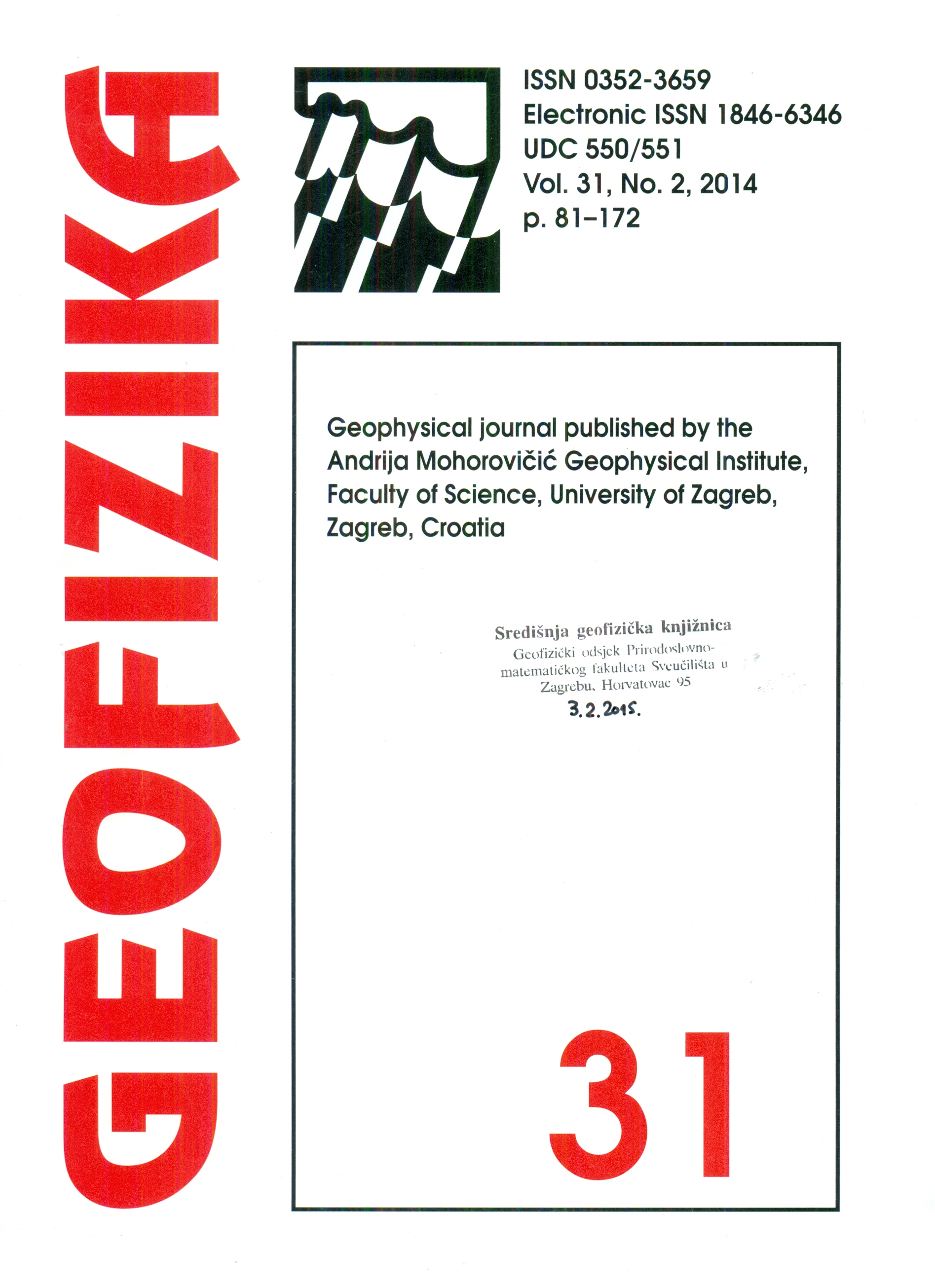The role of advection and of work done by forces in the gustiness of the Bora flow
DOI:
https://doi.org/10.15233/gfz.2014.31.5Keywords:
bora gustiness, internal flow dynamics, WRF-ARW modelAbstract
Local wind changes within the flow of the Adriatic Bora are investigated in the case of 8 December 2001 that was simulated with the WRF/ARW model in a 333 m horizontal resolution and with all relevant model variables archived during a 3 h time interval with 1 s temporal resolution. Along a selected cross section, two locations of strong gusts in the lee of a Dinaric mountain ridge are found - the upper one on the slope and the other over the sea close to the coastline; in between the wind is considerably weaker. About 16 to 18 gusts developed in the 3 h interval at both locations with an average period of approximately 8.5 min. The advective transport of kinetic energy (KE), the work of the unbalanced part of the pressure gradient force and the diffusion and dissipation of KE cause the local change ΔKE, and their quasi-periodic fluctuations lead to gusts and lulls. The results of the numerical simulation enable an estimation of the contributions of advection, the work of forces and of turbulence and dissipation effects. Advective contributions to local changes are more or less in the phase with ΔKE and ahead of the phase of KE, while the contributions of work are generally smaller and in the opposite phase: so in general the advection and the work effects oppose each other. The advection and the work effects are not spatially homogeneous, i.e. they cease and even change their sign between the two locations of the strongest gusts and so there is no continuous displacement of KE from the upper to the lower location by either of the two effects: their contributions interchange with each other down the slope.
Downloads
Published
Issue
Section
License
Copyright (c) 2021 Geofizika journal

This work is licensed under a Creative Commons Attribution-NonCommercial 4.0 International License.

